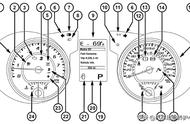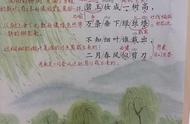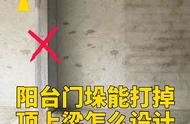Unit3 How do you get to school?
Unit 3单词 (音标)
train [treɪn] n.火车
bus [bʌs] n.公共汽车;公交车
subway ['sʌbweɪ] n.地铁
take the subway 乘地铁
ride [raɪd] v.骑 n.旅程
bike [baɪ k] n. 自行车
ride a bike 骑自行车
sixty ['sɪkstɪ] num.六十
seventy ['sevntɪ] num.七十
eighty ['eɪtɪ] num.八十
ninety['naɪntɪ] num.九十
hundred ['hʌndrəd] num.一百
minute['mɪnɪt] n.分钟
far [fɑː] adv. & adj. 远;远的
kilometer ['kɪlə,mitə(r)] n.公里
new [njuː] adj. 新的;刚出现的
every ['evrɪ] adj. 每一;每个
every day 每天
by [baɪ] prep. (表示方式)乘(交通工具)
by bike 骑自行车
drive [draɪv] v. 开车
car [kɑː] n.小汽车;轿车
live[lɪv] v. 居住;生活
stop [stɑ:p][stɒp] n. 车站;v. 停止
think of 认为
cross [krɒs] v.横过;越过
river ['rɪvə] n.河;江
many ['menɪ] adj. & pron.许多
village ['vɪlɪdʒ] n.村庄;村镇
between [bɪ'twiːn] prep.介于…之间
between…and…在……和……之间
bridge [brɪdʒ] n.桥
boat [bəʊt] n.小船
ropeway ['rəʊpweɪ] n.索道
year [jɪə] [ jɜː] n.年;岁
afraid [ə'freɪd] adj.害怕;惧怕
like [laɪk] prep.像;
leave [liːv] v.离开
dream [driːm] n.梦想;睡梦 v.做梦
true [truː] adj.真的;符合事实的
come true实现;成为现实
Dave[deiv] 戴夫(男名)
unit3电子课本






Unit3 知识梳理
◆短语归纳
1. get to school 到达学校
2. take the subway 乘地铁
3. ride a bike 骑自行车
4. how far 多远
5. from home to school 从家到学校
6. every day 每天
7. take the bus 乘公共汽车
8. by bike 骑自行车
9. bus stop 公共汽车站
10. think of 认为
11. between…and… 在…和…之间
12. one 11-year-old boy 一个11岁的男孩 13.
play with… 和…玩
14. come true 实现
15. have to 不得不
◆用法集萃
1. take…to…= go to…by… 乘…去…
2. How do/does sb get to…? 某人是怎样到…的?
3. How far is it from…to…? 从…到…有多远?
4. It takes sb. some time to do sth. 做某事花费某人多长时间。5. How long does it take to do sth.? …花费多长时间?
6. It is adj. to do sth. 做某事是…
7. Thanks for n./Ving 感谢你(做)某事。
◆典句必背
1. —How do you get to school? 你怎么去上学?
—I ride my bike. 我骑自行车。
2. How far is it from your home to school? 从你家到学校有多远?
3. How long does it take you to get to school? 去上学花费你多久?
4. For many students, it is easy to get to school. 对很多学生来说,很容易到达学校。
5. There is a very big river between their school and the village. 在他们学校和村庄之间有一条很大的河流。
◆话题写作
主题:上学的交通方式
写作思路:②开篇点题:点出自己的出行方式;②具体内容:自己选择这种交通方式的原因;③结束语: 表明自己的观点。
The Best Way for Me to Go to School
Different students go to school in different ways in our school, but I llike to go to school on foot.
First, I live near the school, so my home is not far from my school. And it takes me a few minutes to get there. Second, there is a crossing on my way to school, and sometimes the traffic is very busy. I think it is safer to go to school on foot. Third, I think walking is good for my health. It’s a kind of sport and it makes me study better.
So in my opinion, the best way to go to school is on foot. What about you?
Unit3 How do you get to school?
01 词汇讲解
1. subway
1)subway 在美式英语中意为“地铁”。更常用“take the subway”或者“go by subway”表示“乘坐地铁”,而一般不用“take a subway”或者“go by a/the subway”。例如:
Let’s go by subway. 让我们乘地铁去吧。
You can take the subway to come to my house.
你可以坐地铁来我家。
2)subway在英式英语中意为“地下通道”。英式英语的“地铁”是“the underground”。例如:
We travelled across London on the underground.
我们乘地铁穿过伦敦。
3)subway train 指“地铁列车”; subway station指“地铁站”。例如:
I’m on a subway train. I can’t hear you clearly.
我在地铁上呢,听不清楚你说话。
It takes me 15munites to walk to the nearest subway station from my home.
从我家步行到最近的地铁站需要15分钟。
2. ride
1)ride 做名词时,意为“(乘坐汽车等的)旅行;乘骑;(乘车或骑车的)短途旅程”等。常用于词组:go for a ride (去兜风) give sb. a ride (让……搭车)。例如:
Can you give me a ride to the market?
你能让我搭车去市场吗?
I’d like to go for a ride. 我想出去兜兜风。
How much is a ride? 乘一次多少钱?
2)ride做动词,意为“乘车,乘坐,搭乘”。例如:
He often rides his bike to school.
他经常骑自行车去学校。
My little sister can ride a horse. She’s very brave.
我妹妹会骑马;她非常勇敢。
3. run
1)run 作动词时,有“跑,奔跑”的意思,还有“移动,流动”的意思。例如:
He runs very fast. 他跑的很快。
The rivers run into the sea. 河流流入大海。
Your nose is running, have you got a cold?
你在流鼻涕,你感冒了吗?
2)run作名词时,意为“跑;奔;路程;短期旅行”等。例如:
It is an hour’s run by train from here to London.
从此地到伦敦搭火车有一小时的行程。
Let's go for a run across the fields.
咱们去跑步,跑过那片田野吧。
拓展:
run 作动词时常见的用法还有很多:
1)行驶;开 例如:
Some of these old cars are still running.
有些这样的老车仍在行驶。
Let me run the machine.
让我来开动这台机器。
2)运转;进行;延伸 例如:
The machines run day and night. 机器日夜不停地转动。
The road runs north. 这条路伸向北方。
3)追赶 例如:
The hunter is running a fox. 猎人正在追狐狸。
The dog likes running the chickens. 那只狗喜欢追小鸡。
4)管理;经营;指挥 例如:
My father runs a camera store.
我父亲经营一家照相器材商店。
Who runs the business? 谁管事?
4. think of
1)think of 意为“认为,想起,考虑”等。后跟名词、代词、动名词等形式。例如:
What are you thinking of ? 你在想什么?
She will smile when she thinks of her good friends.
当她想起她的好朋友时她就会微笑。
2)think of 当“考虑, 对……有某种看法”讲时可以和think about互换。例如:
Don’t think of(about)me any more.不要再考虑我。
They’re thinking about(of)buying a new car.
他们正在考虑买一辆新车。
常见的think构成的词组还有think over,意为“仔细考虑”。例如:
Think over,and you’ll find a way.仔细考虑一下,你就会有办法的。
5. come true
come true 意为“实现,应验,成为现实”等,常用来表示梦想、愿望等的实现,是一个常用词组。例如:
Your dream will come true. 你的梦想会成真的。
His words really come true. 他的话真的应验了。
拓展:
realize 和 come true都有“实现(理想/愿望等)”之意,但两者用法不同。realize是及物动词,常用于sb. realize sth. 这种结构, 句子的主语是人。come true 是不及物动词词组,句子的主语通常是“理想、愿望”等词。例如:
The Chinese people are working hard to realize the modernizations. 中国人民正在为实现现代化而努力工作。
His dream of becoming a teacher came true.
他当教师的理想实现了。
6. no
no 有“不,毫不, 根本不”等意思,常见的用法有:
1) no 用于引导否定的答语,意为“不”。例如:
—Do you like the cat? 你喜欢猫吗?
—No, I don’t. 不,我不喜欢。
—Can you play the guitar? 你会弹吉他吗?
—No, I can’t. 不,我不会。
2)no 置于可数名词单数前面时,相当于 not a; 放在可数名词复数前面或不可数名词前时,相当于 not any;意为“完全不,根本不”。例如:
There are no (=not any) computers in that small village. 那个小山村里(根本)没有电脑。
Kate is no teacher.(=Kate is not a teacher.) 凯特(根本)不是教师。
注意:no也可以修饰形容词比较等级,表示“完全不,根本不”的意思。例如:
I'm feeling no better than yesterday. 我一点儿也不觉得比昨天好。
7. like
1)like 作动词,意为“喜欢,想要”,反义词是dislike或hate。后面可以跟名词,动词不定式或者动名词等。例如:
I’d like some noodles. 我想吃些面条。
My father likes watching TV after supper.
我爸爸喜欢在晚饭后看电视。
She likes flowers very much. 她很喜欢花。
注意:like后跟to do 时,表示“某一次的喜好或者倾向”;后跟doing时,表示一贯的习惯或者爱好。例如:
She likes doing her homework after supper, but today she likes to watch TV.
她晚饭后一般喜欢做作业,但是今天她想看电视。
2)like 作介词,意为“如同,像”,反义词是unlike。用于“be like 名词或代词”时,意为“像……”;构成“look like”时,意为“看起来与……相像”。例如:
The baby is like his mother. 这个小婴儿长得像他妈妈。
He looks like a teacher. 他看上去像个老师。
8. cross
1)cross 作动词, 意为“横过,越过”,指从表面上横过。例如:
They cross the river every day. 他们每天都要过河。
Cross the road, you will see the store. 过了马路,你就会看到那个商店。
2)cross 作名词,意为“十字架,十字形饰物;画十字的动作”。例如: Jesus died on the cross. 耶稣死在十字架上。
He made a cross over his head. 他在他头上画了一个十字。
拓展:across和cross的区别
这两个词都是“横越, 横跨,横穿”的意思,但是cross是动词可以单独作谓语;但是across是介词,需要和动词一起构成谓语。例如:
They cross the street to go to school every day.
他们每天横过马路去上学。
They walk across the street to go to school every day.
他们每天步行横过马路去上学。
9. stop
1)stop 作动词,意为“停止,中断,阻止,阻拦”等意。既可以做及物动词,也可以做不及物动词。例如:
The car stopped. 车停了。
The guard stopped me at the gate. 卫兵在大门口将我拦住。
2)stop 作名词,意为“停止; 逗留,车站”等。例如:
I will wait for you at the bus stop. 我会在公共汽车站等你。
He slowed the car almost to a stop. 他放慢车速,车几乎停住了。
10. dream
1)dream 作动词,意为“做梦,梦见,渴望,向往”等意,既可以做及物动词,也可以做不及物动词。意为“做……梦“时,后跟同源名词dream做宾语;意为“梦见”时,常和about连用;意为“渴望、向往、考虑”等时常和of连用。例如:
She dreams a good dream every night.
她每晚都做美梦。
I sometimes dream about my good friends.
我时常梦见我的好朋友。
I dream of becoming a teacher.
我渴望成为一名教师。
2) dream 作名词,意为“梦,愿望,心愿”等。例如:
It's my dream to win a Nobel Prize. 我的理想是获得诺贝尔奖。
Your dream has come true. 你的愿望变成了现实。
11. 11-year-old
11-year-old, 是一个复合形容词。复合形容词的构成方法有很多,“基数词 名词(不用复数),中间用连字符隔开,就构成复合形容词的一种,表示时间、度量等。可以在句子中充当定语修饰名词。例如:
a 10- year-old boy 一个10岁的男孩儿
a two-day conference 为期两天的会议
a 3-hour journey 一次3小时的旅程
a three-mile walk 一段三英里的步行
a two-hour exam. 一次两小时的考试
12. hundred
hundred是数词,意为“百”,当表示具体的“几百”时,用“基数词 hundred”,注意不加-s。例如:
There are nine hundred students in our school. 我们学校有900名学生。
拓展:
1)hundreds of 表示“数百,成百上千的”这时hundred后要加-s,且后面有介词of,但是不能与数词连用。例如:
There are hundreds of people in the restaurant.
在餐馆里有成百上千的人。
2)表示数词的还有thousand“千”,million“百万”,billion“十亿”。它们的用法和hundred一样,可以用来表示约数和确数。例如:
There are thousands of people are waiting to see the movie star.
数千人在等着见那个电影明星。
练一练:
Ⅰ.根据首字母提示填空。
1. He r______ bike to school every day.
2. My home is about 5 k_______ from school.
3. It takes about twenty m_______ to walk to school.
4. The students in a poor village go on a r_______ to cross the river to school.
5. I wait for a bus at the bus s_______ every morning.
6. We should t_______ of others first.
7. There is a very big river b_______ their school and the village.
8. I go home by s_______ on weekdays.
9. One h________ is the number 100.
10. There is no bridge and the river r_______ too quickly for boats.
Ⅱ.用括号中所给单词的适当形式填空。
1. About five ________(hundred) students in our school go to school by bike.
2. How does your father ________(go) to work every day?
3. The hamburger is not _________(health) food.
4. Many of the ________ (student) never leave the village.
5. How do you________(get) to school ?
6. My mother _________ (go) to work by bus every day.
7. There are_________(hundred) of people in the cinema.
8. He says his bike is broken, so he ________ (have) to go to school by bus.
9. It often ________ (take) her 3 hours to play sports.
10. I love my teacher. He is ________ (like) a father to me.
Ⅲ.选词填空。
1. There is _______ ( no, not) bridge on the river.
2. I can swim _______ (cross, across) the river.
3. she is a_______ (9-year-old, 9-years-old) girl.
4. She is _______ (dislike, unlike) her mother. She is tall, but her mother is short.
5. She never ______ (thinks over, thinks of) before she does something.
6. My dream can ______ ( come true, realize), because I work very hard.
7. He is ______ (a, an) 18-year-old boy.
8. Do you go by bus _______ (and, or) by bike?
9. Do you usually _______ (take a subway, take the subway) to go to school?
10. _______ (For, To) many students, it is easy to get to school.
参考答案
Ⅰ.根据首字母提示填空。
1. rides 2. kilometers 3. minutes
4. ropeway 5. stop 6. think
7. between 8. subway 9. hundred 10. runs
Ⅱ.用括号中所给单词的适当形式填空。
1. hundred 2. go 3. healthy 4. students
5. get 6. goes 7. hundreds
8. has 9. takes 10. like
III.选词填空。
1. no 2. across 3. 9-year-old 4. unlike
5. thinks over 6. come true 7. an
8. or 9. take the subway 10. For
02 重点句型解析
1. be afraid…
afraid是形容词, 意为“害怕的, 恐惧的”。常和系动词一起构成系表结构。例如:
I am not afraid. 我不害怕。
句式be afraid是afraid最常用的形式,其常见的用法有:
1)be afraid of
① be afraid of 后跟名词或者代词,意为“害怕某人或某物”。例如:
Are you afraid of dogs? 你害怕狗吗?
She seems very much afraid of him. 她好像很害怕他。
② be afraid of后跟动名词时,意为“怕做某事或不敢做某事”。例如: I’m afraid of telling her. 我不敢告诉她。
He is afraid of jumping. 他不敢跳。
③ be afraid of还可以指“担心会发生某事或某情况(但实际上未必会发生)”。例如:
She was afraid of waking her husband. 她怕吵醒她丈夫。
I am afraid of hurting her feelings. 我怕伤害她的感情。
2)be afraid to
be afraid to 后接动词原形,意为“害怕做某事或不敢做某事”。例如: He is afraid to fly in a plane. 他不敢坐飞机。
注意:表示担心会发生某事或某情况,只能用 be afraid of , 而表示“害怕做某事或不敢做某事”时,既可以用be afraid of 也可以用be afraid to。例如:
Don’t be afraid to ask (of asking) question.
不要害怕问问题。
He is afraid to go out (of going out) alone at night.
他不敢晚上一个人出去。
3)be afraid that
be afraid that后跟一个完整的句子,意为“担心/恐怕……”。例如:
He is afraid that she will not come. 他担心她不会来。
I am afraid I can’t help you. 恐怕我帮不了你。
在日常口语中, “I’m afraid that…”在很多场合相当于“I’m sorry, but…”。用于提出异议,说出令人不快的事实,拒绝对方的要求等,使语气委婉。例如:
I'm afraid I don't understand. 抱歉,我不明白你的意思。
I’m afraid you are wrong. (You are wrong, I’m afraid.) 恐怕你错了。
4)在口语中I’m afraid so. 和I’m afraid not.常用作简略答语。例如:
-Is it going to rain tomorrow? 明天会下雨吗?
-I’m afraid so. 恐怕会。
-I’m afraid not. 恐怕不会。
2. It takes sb. some time to do sth.
1)It takes sb. some time to do sth.是固定句型,意为“做某事需要花费某人多长时间”。take在此意为“花费”,it是形式主语,真正的主语是后面的不定式to do sth.,对这个句式 中的时间提问时用how long。例如:
It takes me half an hour to finish my homework every day.
我每天花费半个小时的时间做作业。
How long does it take you from your home to school?
从学校到你家要花多长时间?
2)动词spend也有“花费多长时间做某事”的意思,但句式和take不同。它的句式是“sb. spends 时间或金钱 (in) doing sth. /on sth.”。例如: I spend about 3 hours (in) doing /on my homework every day.
我每天花大约三个小时做作业。
3. How do you get to school?
1)这是由how构成的一个特殊疑问句,用来提问到达某地的方式。句子的结构是“How do/does 主语 谓语 其他”。当主语是第三人称单数时,助动词用does,其余人称用do。例如:
How do you go home every day? 你每天怎么回家?
How does your father get to work? 你爸爸怎么去上班?
2)特殊疑问词how 有“如何,怎样,多么”等意,用于询问动作执行的方式、手段、程度。例如:
— How does your father go to work? 你父亲怎样去上班?
— On foot. 步行。
— How do you like China? 你觉得中国怎么样?
— Very much. 非常喜欢。
— How are your parents? 你父母身体怎样?
— Fine. Thank you. 很好,谢谢!
拓展:
how可以和不同的词搭配,构成不同的意思来引导特殊疑问句, 除了我们之前学过的 “how about, how many/ much, how old”等,常见的搭配还有:
how far 用来询问距离,意为“多远”;
how long用于询问时间的长短或者物体的长度意为“多长/久”。例如:
How far is it from your school to the cinema?
从你们学校到电影院有多远?
How long is the river? 那条河有多长?
4. 表示“乘……”的几种表达方式
1)用介词短语来表示交通方式,介词短语在句中作状语。
(1) 用“by 交通工具名词”表示交通方式。例如:
by bike骑自行车 by car乘小汽车 by bus乘公共汽车
(2) 用“by 交通路线的位置”来表示交通方式。例如:
by water由水路 by land从陆路 by sea从海路 by air乘飞机
(3) 用“in/on 冠词/形容词性物主代词/指示代词 交通工具名词”表示交通方式。 其中,in多用在car等交通工具之前,而on多用在bike/horse/bus/train/ship等交通工具之前,它们的用法与“by 交通工具名词”的用法相同。例如:
She often goes to school on a/her bike.= She often goes to school by bike.她经常骑自行车上学。
(4) on foot步行。on foot是固定搭配,表示步行,其中foot不能用复数形式feet,其前也不加任何修饰词。例如:
She often goes to school on foot. 她经常步行去上学。
2)用动词短语表示交通方式,动词短语在句中作谓语。
(1)用“take a/the 交通工具名词”表示交通方式。例如:
take a train乘火车 take a bus乘公共汽车
take a ship乘船 take a plane乘飞机
注意:“骑自行车”要翻译为“ride a bike”
(2) 用某些动词来表示交通方式。例如:
walk to步行去 drive to开车去 ride to骑车/马去
注意:如果接地点副词here; there; home时,介词to应该省略。
5. I’m not sure.
1)这句话的意思是“我不是很肯定。/ 我不是很有把握。”;是一个表达对自己所判断的事物没有确切把握时的一个固定套语,它的疑问形式和肯定形式也常用于口语中。例如:
-Are you sure? 你确信吗?
-Yes, I’m sure. 是的,我确信。
2)其中的形容词sure意为“肯定的,确定的”, 可以构成词组make sure, 意为“把事情弄清楚,确信,务使”等;可以直接在句子中作谓语。例如:
Make sure everybody understand you.
要确信每一个人都明白你的意思。
练一练:
Ⅰ.根据课文内容补全对话,每空一词(L:Lisa J:Jane)。
L: Is this your new bike?
J: Yes. I 1 it to school every day. How do you 2 to school?
L: I usually 3 the bus.
J: How 4 is it from your school to home?
L: I’m not 5 . It’s about 10 kilometers. The bus 6 takes about 20 minutes. How about you?
J: About 15 minutes 7 bike. It’s good 8 .
L: Yeath. Well, have a 9 day at school.
J: You, 10 .
Ⅱ.句型转换,每空一词。
1. They go to school by train. (对划线部分提问)
_____ do they _____ to school?
2. It takes about 20 minutes to go there by bus. (对划线部分提问)
_____ _____ does it _____ to go there by bus?
3. It is 5 kilometers from my home to school. (对划线部分提问)
_____ _____ is it from _____ home to school?
4. I’m sure. (变为一般疑问句)
____________________?
5. Students go to school by bike every day. (同义句转换)
Students _____ _____ _____ to school every day.
6. I often have bread for breakfast. (变为一般疑问句)
_____ you often _____ bread for breakfast?
7. Usually it takes him two hours to finish his homework. (变为同义句)
_____usually _____ two hours _____ _____ his homework.
8. Does Jane walk to school? (变为肯定句)
Jane ______ _______school.
9. They take the bus to school. (变为一般疑问句)
______ they______ the bus to school?
10. She takes the subway to go to school. (变为同义句)
She ____ _____ school ____ ____.
III.根据汉语意思,完成句子,每空一词。
1. — 吉姆,你怎样到校?— 步行。
— Jim, ____ do you ____ ____ school?
— _____ _____.
2. 你们必须骑自行车去那个农场。
You ____ ____ ____ ____ bikes to that farm.
3. 我们可以坐火车去他的家乡。
We can ______ the train _____ his hometown.
4. 那个男孩甚至想骑自行车环游世界。
The boy even wants to go around the world ____ _____.
5. 学校离你家有多远?
How_____ is it ____your home ____ school?
6. 这张桌子有多长?
_______ _______ is the table?
7. 你通常怎样去学校?
__ do you usually _____ _____ school?
8. 到家需要花费多长时间?
_____ _____ does it ____ to get home?
9. 对很多学生来说,到学校是件很容易的事情。
______ many _____, it’s easy to ____ to school.
10. 他们的梦想能实现吗?
Can their ____ _____ _____?
IV.阅读短文,英汉互译下列句子。
Today is Sunday. Lucy wants to visit her friend, Lisa. Lisa’s house is on Bridge Street. It is far from Lucy’s house, 因此露西在超市前面乘公交车。The supermarket is just next to her house.
The bus goes down New Street and then turns left. Now it is on Center Street. It goes straight and goes across Bridge Street. 它把露西带到了KFC。Then Lucy has to walk to Lisa’s house. She passes the post office and the bank on her right. She arrives at Lisa’s house now.
1.____________________
2.____________________
3.____________________
4.____________________
5.____________________
参考答案
Ⅰ.根据课文内容补全对话,每空一词。
1. ride 2. get 3. take 4. far 5. sure
6. ride 7. by 8. exercise 9. good 10. too
Ⅱ.句型转换,每空一词。
1. How; go 2. How long; take 3. How far; your
4. Are you sure 5. ride their bikes
6. Do; have 7. He spends; in finishing
8. walks to 9. Do, take
10. goes to, by subway
III.根据汉语意思,完成句子,每空一词。
1. how; get to,on foot 2. have to ride your
3. take, to 4. by bike 5. far, from, to
6. How long 7. How, go to 8. How long, take
9. For, students, get 10. dreams, come true
IV. 阅读短文,英汉互译下列句子。
1. 露西想要拜访她的朋友丽萨。
2. so Lucy takes a bus in front of the supermarket.
3.公共汽车沿着新街向前行然后左拐。
4. It takes Lucy to KFC.
5.她经过了右边的邮局和银行。
【版权说明】本文来源于网络,版权归原作者所有,由于无法查明出处,如涉版权,请联系删除。
,













